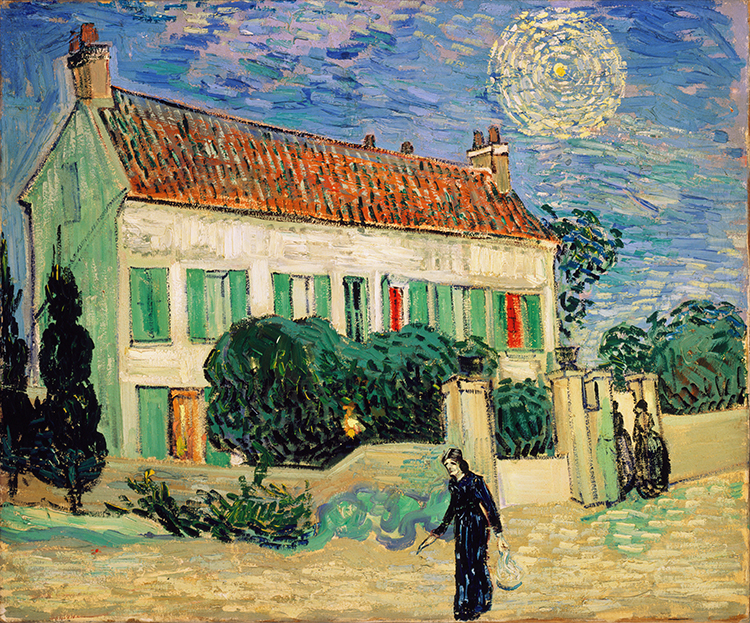
"It gets dark before din­ner now in my part of the world, a recipe for sea­son­al depres­sion. Vin­cent van Gogh wrote about such low feel­ings with deep insight. "One feels as if one were lying bound hand and foot at the bot­tom of a deep dark well, utter­ly help­less." Yet, when he looked up at the night sky he saw not dark­ness but blaz­ing light: a full moon shines yel­low from White House at Night like the sun,"
"It's been sug­gest­ed that Van Gogh saw halos of light because of lead poi­son­ing from his paint, and that the Dig­i­tal­is Dr. Gachet pre­scribed for his tem­po­ral lobe epilep­sy caused him to "see in yel­low," the Van Gogh Gallery Blog writes, "or see yel­low spots which could explain van Gogh's con­sis­tent use of the col­or yel­low in his lat­er works.""
"His most bril­liant works date from this lat­er peri­od, dur­ing his time at the hos­pi­tal at Arles, where he paint­ed his famous bed­room. All of these paint­ings, and hun­dreds more, can be found in high-res­o­lu­tion scans at the new van Gogh resource, Van Gogh World­wide, "a con­sor­tium of muse­ums," notes Madeleine Muz­dakis at My Mod­ern Met, "doing their part to bring the work of one of the world's most famous artists to the glob­al mass­es.""
Evening darkness can trigger seasonal depression. Vincent van Gogh described profound despair as feeling bound at the bottom of a deep dark well, utterly helpless. He painted night skies that glow with blazing light and saturated yellows, depicting full moons, golden coins behind blue mountains, and starry fireworks. Medical explanations include halos from lead poisoning in paints and digitalis prescribed for temporal-lobe epilepsy producing yellow spots and intense yellow perception. Van Gogh's most brilliant paintings date from his later period at the Arles hospital, including the Bedroom. High-resolution scans of hundreds of paintings are available through a consortium resource called Van Gogh Worldwide, hosted by Dutch museums.
Read at Open Culture
Unable to calculate read time
Collection
[
|
...
]